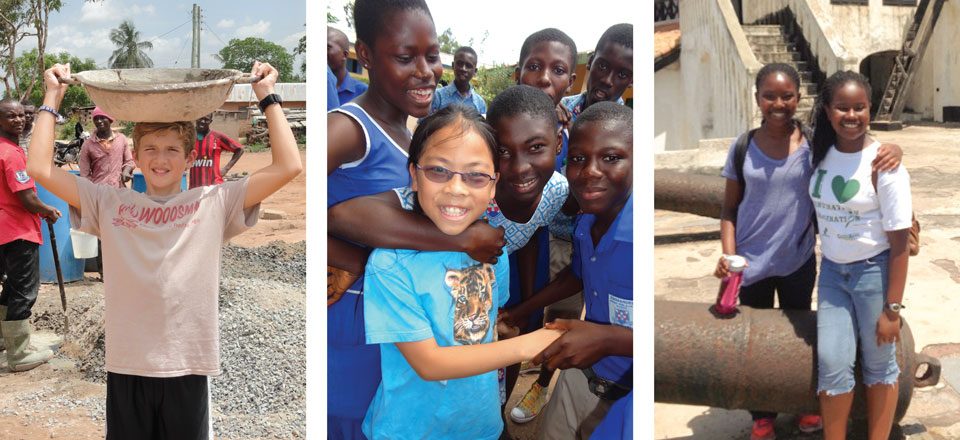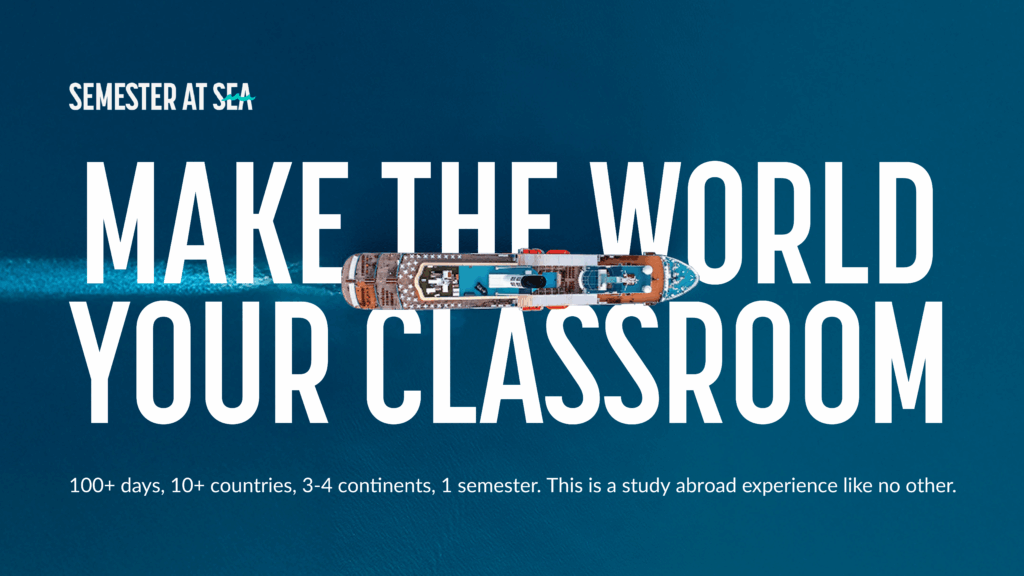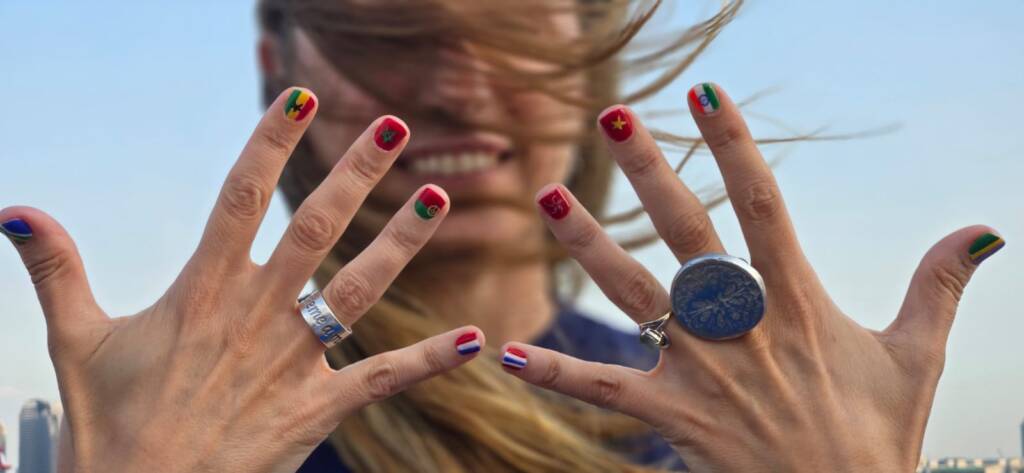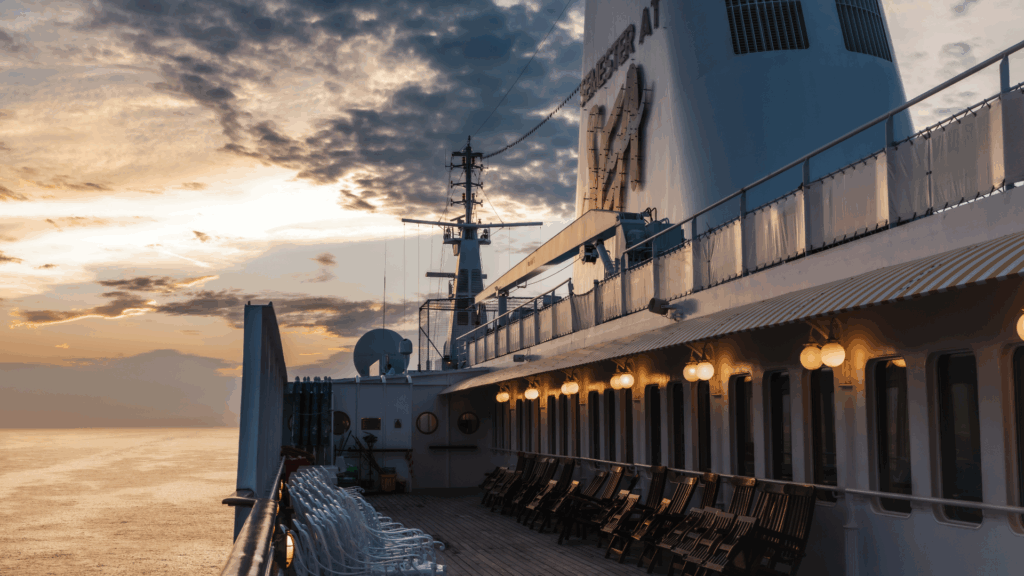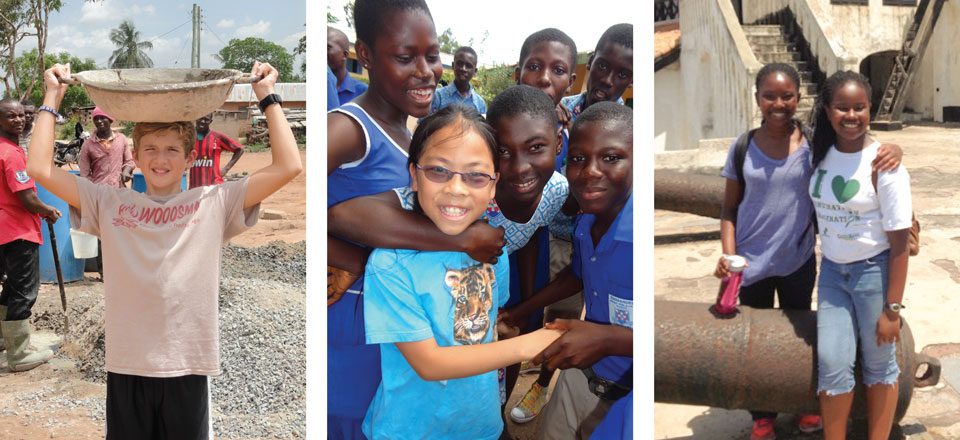
There are 22 dependent children on board the MV Explorer for the Fall 2013, 50th anniversary voyage. They are the sons and daughters of faculty and staff members and a life-long learner and range in age from three years to 16 years old. To date, these kids have explored 11 countries, tasted an abundance of new foods, and discovered new things about themselves and other people and parts of the world. In Ghana, the children visited rural schools and villages that lacked proper school houses, explored Accra, traveled to Charlottesville, Virginia’s sister city in Ghana (Winneba) and made art with local artists. Here are experiences from several of them.
Aziza Mbugua (age 15)
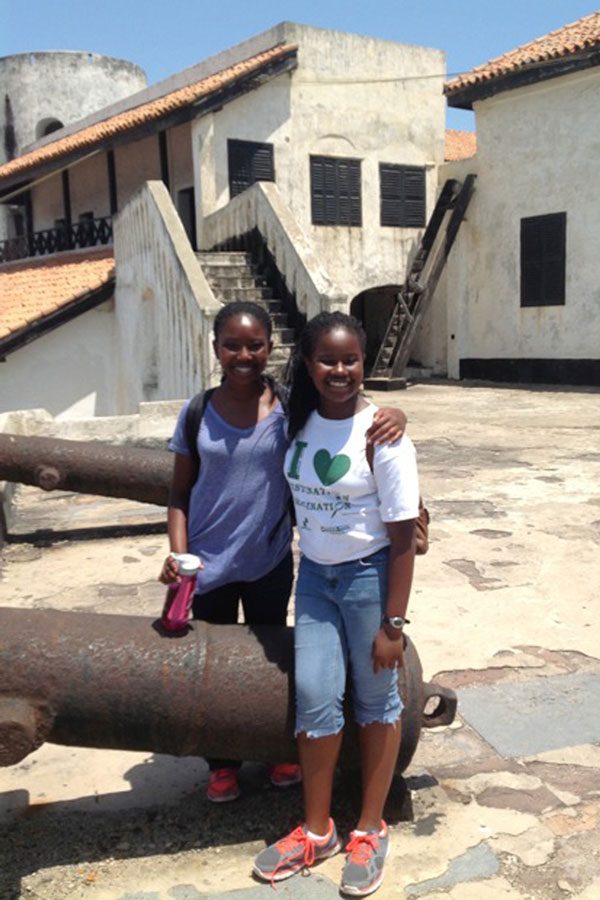
Upon our arrival in Tema, I took an SAS tour of El Mina and Cape Coast Castles. Visiting those castles, hubs of the Atlantic Slave Trade, gave me an understanding of my home country, the U.S., that I previously had lacked. El Mina, Portuguese for “The Mine”, is over 500 years old and singlehandedly exported three to four million slaves. The beauty of the land and sea warred with the legacy of what happened there. As we entered the first dungeon, the female dungeon, everyone wrinkled his or her nose. Even now, more than a century after the abolition of slavery, one can still distinctly smell something in the air, unpleasant, like too many bodies pressed together and utter, human desperation. Next, we visited Cape Coast Castle, which dates back to just over 300 years. During the Cape Coast tour, our guide informed the group that we were not walking on a stone floor. We were, in fact, standing on what the slaves had left behind; blood, vomit, feces, and urine, it was hard as stone. In some parts of the dungeons, the floor had been excavated to show just how deep the remains were. In some places it was as much as eight inches deep. We journeyed on through the Door of No Return, where slaves were put on ships. As I passed through that door, I knew I was fortunate to be born when and where I was and, as I returned, it gave me hope for a better and brighter tomorrow.
Jones Boyer (age 11)
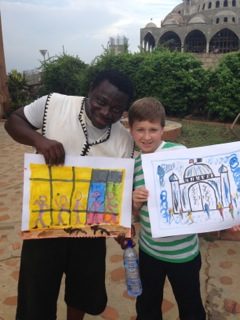
I went on the SAS Nima Street Art tour and it was very interesting. We got to learn about different programs and fundraisers led by artists and singers to help kids get the money they need to do what they were very talented at. We got to meet a rapper, named Friction, who is famous throughout all of Ghana and led a lot of the fundraisers. At first, I was uncomfortable with the heat and the smells and the poverty, but once we were there for a while I was comfortable again with how nice and friendly everyone was. I got to learn a lot about art in Ghana and even made my own painting at the end. The guides were very friendly and were willing to answer any questions we had. All the people there were very nice and since I was the only kid on the field excursion, I even got a free painting that one of the guides had made. The guides were very generous and one of the guides even got his family to come in and cook a delicious meal of homemade rice, fish stew, beef and cheese. I enjoyed going into the neighborhood and interacting with the kids and I think they enjoyed interacting with me too since they seemed very excited to see a kid from America. Overall, I think this was a very great trip.
Lisa Goering (age 11)

Some Ghanaian visitors came to the ship from Winneba and we showed them around. They ate lunch with us and we told them all about the ship, then, we all went to Winneba by bus. We met the chiefs of the town for a welcome ceremony. They were dressed in Ghanaian clothes. At dinner, that evening, we had rice, yam, fries, fufu, fish and jambu, a type of fruit. We also went to the university and the teachers. There was drumming and singing and everybody danced. The next day we went to the Presby Junior High. The school is one big building with small classrooms. It has no electricity and it was really hot. There are windows for light and air. The desks were very little and there were lots of kids. Students wear uniforms and the girls wear their hair very short. The students only have chalkboards to use. When we visited each classroom we told them about Semester at Sea and I talked about middle school in North Carolina. We all sang the Ghanaian national anthem. After our classroom visits, we had another ceremony at the junior high to give away the books we brought. Then, we shook hands with all 300 of the kids. They all crowded around me and hugged me and asked me questions and wanted to touch my hair. Everyone was really nice.
Thomas Young (age 12)
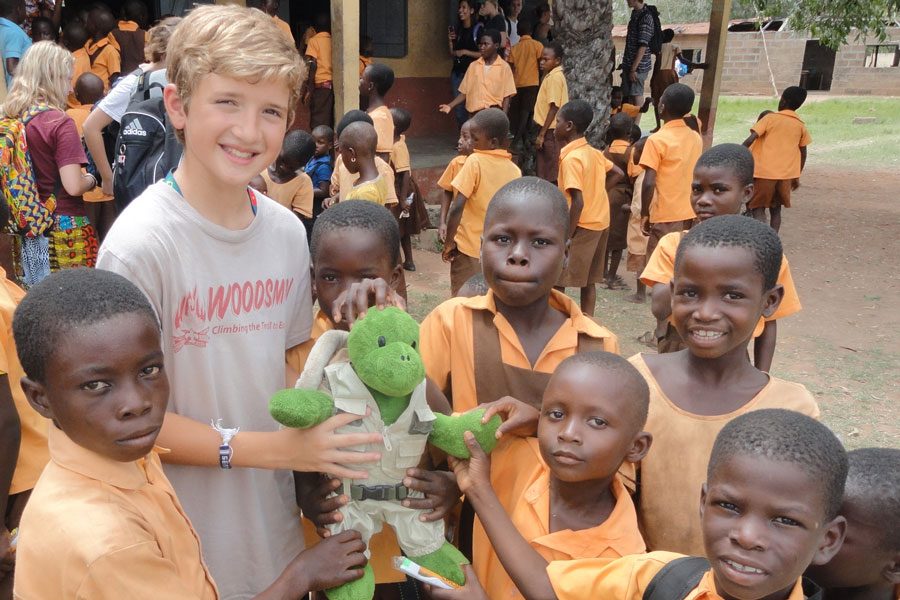
I went on the Pencils of Promise trip in Ghana. Pencils of Promise, started by a Semester at Sea alumnus, is an organization that builds schools in developing countries. On our trip we were able to visit the department of education, a school that was in progress, and one that was completed. During our meeting with the board of education, they spoke to us about school in Ghana and the many troubles of getting schools to operate. Next, we went to one of the schools being built as a replacement for an existing, very poor school. All the children rushed out to meet us. We talked with the older children and played with the younger ones. When I saw the school that Pencils of Promise replaced, I was just amazed that someone could even call it a school. It was a two-classroom building with holes in the roof. The kindergarteners had to sit outside underneath a tree as a classroom. It made me feel so spoiled and guilty for complaining about how cold my school is.
Then, we went to a second, just- completed school. Children sat there peacefully learning some things that I remember learning. They served us some coconut; the coconut milk tasted very sweet. It rained so we went under the new school roof. We were happy that new roof was there! When we left some of the kids ran out and started looking for untouched coconuts to eat. It made me feel very weird to see kids my age in a hungry state. But then, one of the children, about 10 years old, came out and was playing soccer with a coconut! So, Andrew Gray (who organized the visit) and I ran out and played soccer with him. Although it hurt, it was very fun, and it made me see how little they need to have fun, and how much I have. All the children were nice and they played with us, sang with us, and welcomed us. I’m glad I went on this trip. I feel like I can’t complain about useless things like temperature of schools and how bad my food is because they don’t even have things that we just take for granted.
Habiba Mbugua (age 12)
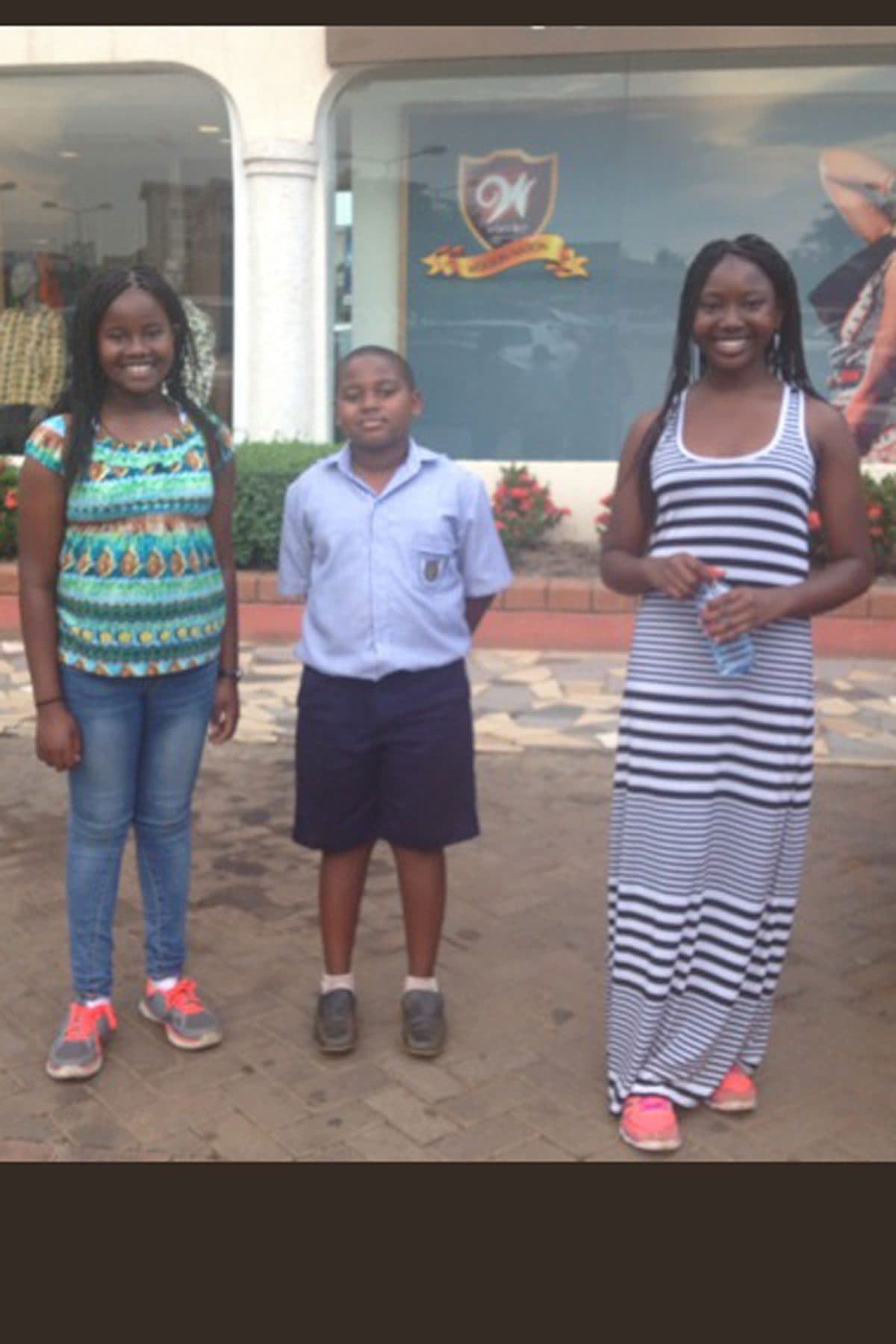
When I went to Accra, Ghana, I saw some very interesting things. My mom’s friend picked us up and took us to Kwame Nkrumah’s grave in his memorial park. First we went to the museum, which gave us a lot of information about his life. We learned he was a very courageous and compassionate man who led his country to independence. Ghana was one of the first African countries to gain independence so other countries followed along. Later, we went to lunch at a cool restaurant with outdoor seating. I had jollof rice with fish. My fish had a delicious, spicy, red sauce that I poured all over my rice. My sister had jollof rice also but she had chicken that looked equally scrumptious. When we all finished eating as much as we could, it was time to pick up Kwasi, my mom’s friend’s son. Kwasi is 10 and his school is huge. We had to walk all over to find him playing ampi with his friends. Ampi is a game where you jump up, clap twice, and kick out with one foot. The object of the game is to guess which foot your opponent will kick out with. We saw other children playing soccer and hand games. It was cool to see a Ghanaian school. After that we were on our way back to the ship, appreciating how awesome Ghana was for us.
Emma Goering (age 14)
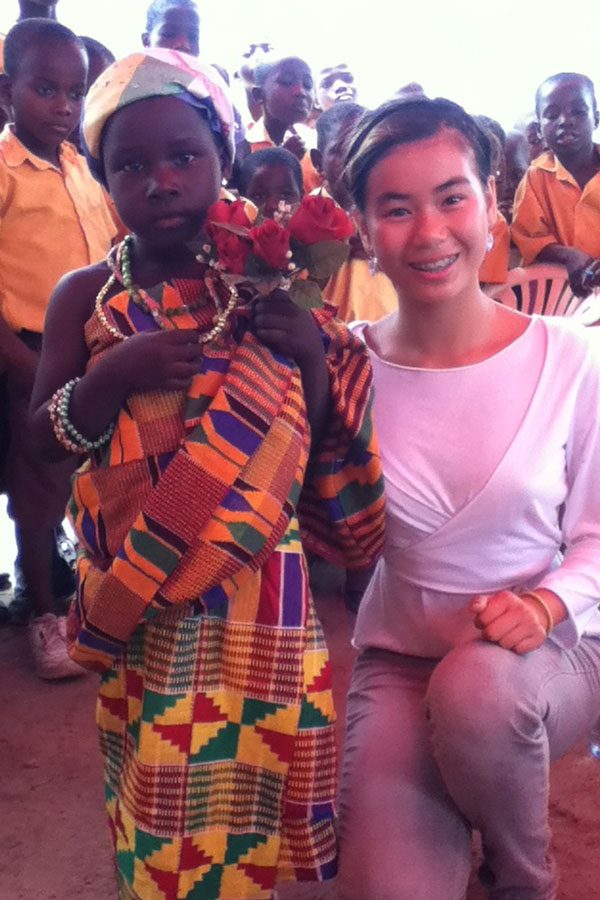
In Winneba, I went with a group to a primary school with grades PreK–8. Some kids were dressed in traditional clothes and greeted us with bouquet of plastic flowers. Then, the teachers introduced themselves and the head master gave our SAS group a ceramic sculpture as a gift. Each person in our group visited different classrooms. In the classroom I went to I talked about Goodnight Moon and the importance of education and Semester at Sea. One class asked me about American history. They also asked me about Ghanaian history. I did not know that much about Ghanaian history. When the students had lunch, every kid had a plastic bowl and got a scoop of rice and peanuts. Later, we all played football and took some pictures. Every time I tried to photograph anyone, masses of students would try to squeeze into the shot. Then, we had to leave. I hope I go back someday.
Blake Pierre-Louis (age 4), As told to his mother, Lorraine Acker, assistant dean of students
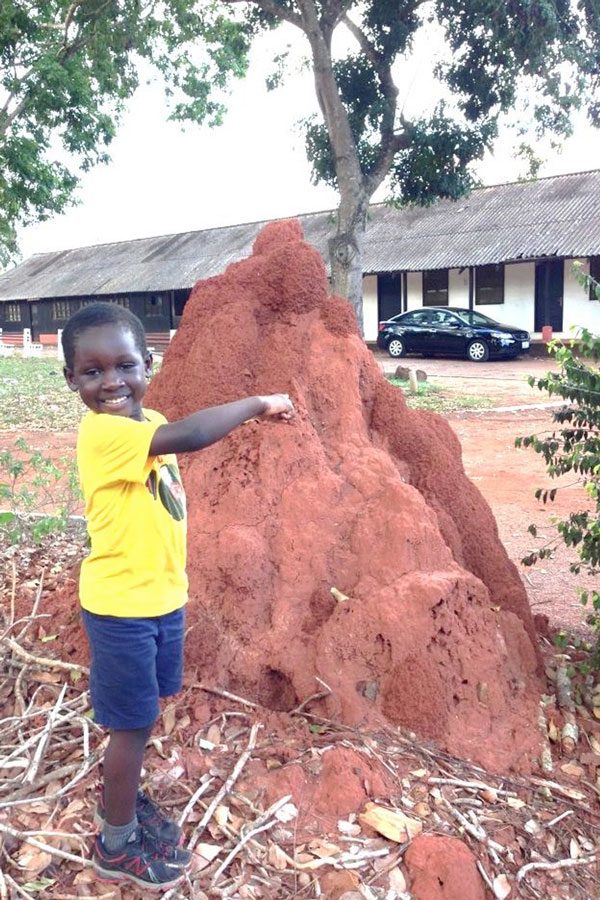
My trip to Ghana was awesome! My mom, her friend, and I took a taxi from Takoradi to Accra. Accra is one of the largest cities in Ghana. I was really excited about Ghana because I saw a show about kids in Ghana and I was excited to see the country and the food, and the beach, and finding a really big anthill. The ride from Takoradi was long, but it was fun to see some of the towns and cities in Ghana. We stayed at the Coconut Grove Hotel in Accra. This hotel was really nice. They gave us fruit juice when we checked in. It wasn’t like any fruit juice I had tasted, but it was yummy! The hotel had all sorts of African artwork. Even the furniture looked like pieces of art. I was glad to be inside, because it was really, really hot outside and the fruit juice cooled us down!
The second day of our trip was really hot, so we went to LaBadi Beach. I was super excited to run and jump around in the ocean. I also had some plantains for lunch. I love plantains!!! They were my favorite things to eat in Ghana. On our third day in Ghana, we visited University of Ghana’s Legon campus. My mom studied there 14 years ago so she knew a lot about Ghana and the university. The campus was really large and beautiful. We went to the Institute for African Studies and met some students and professors. We told them all about our travels on Semester at Sea. Then, we took a taxi to the center of campus. When we got there, mom took us to a spot where we could see the entire city of Accra. It looked pretty tiny, but it was really cool to see.
Our day was almost over and I still hadn’t seen, an anthill. Mom had talked so much about how large the anthills were that I really wanted to see one. We had walked all over campus, but no anthill!! Since it was getting late, we took a taxi back to the Institute for African Studies. On the drive back, we finally spotted an anthill. Mom asked the driver to stop, so we could take a picture and he did. I jumped out of the car and stood face to face with a giant anthill. Seeing the anthill, made this the best trip ever!!
